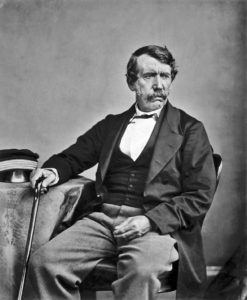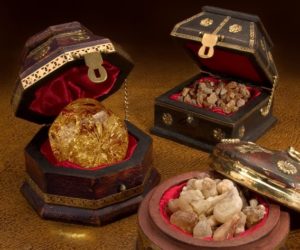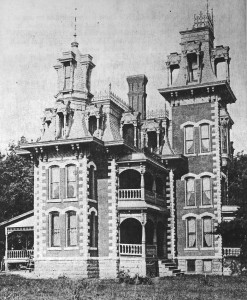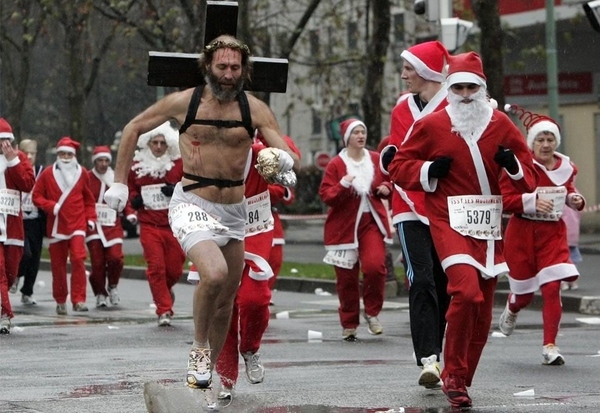Cup & Cross Ministries Shares the Love of Christ with Bulgarian Sunflower Seeds in Polk County, TN

by Kathryn Donev
Sunflowers are so much fun. They are actually thousands of tiny flowers that bring joy in many ways. It’s neat to watch them follow the sun because of a trait called heliotropism. Eating sunflower seeds can lower rates of cardiovascular disease, high cholesterol, and high blood pressure. They are a good source of many vitamins and minerals that can support your immune system. And did you know that a sunflowers destroy contaminants of its surrounding soil, water and air?
Although sunflowers are Native to North America, Bulgaria is among the top 10 sunflower producing countries. As in various places in Polk County, Bulgaria is famous for their golden fields. And believe it or not, you can find Bulgarian sunflower seeds in any Dollar General labeled with the Clover Valley brand. When we were ministering together with Feeding God’s Lambs Summer Program at First Baptist Benton giving a presentation about the 6 Senses of Bulgaria, the kids even got to taste some. Fun.
With a multisensory trip to Bulgaria, we shared how the Holy Spirit is our Sixth Sense to guide and direct us in life and found in everything we touch, see, hear, smell and even taste. When we all come together, we can do great things, just as with the thousands of tiny flowers that come together to have the appearance of a unified flower. Let us be a purifier of our environments and always be reminded to follow the SON. Being consumed with the sixth sense of the Holy Spirit is good for the soul.
Restorative Significance of the Gifts Given to the Christ Child
It is recorded that the Magi gave the Christ Child three gifts upon his birth; gold, frankincense and myrrh. We understand the gold today as a physical gold, representing His kingship and the other two as an incense to symbolize his priestly role and oil for his foreseen death. Yet, what if the gold that was given to the Christ child was for another reason and perhaps it was not “gold”, but a golden spice or a golden salt. Of the gifts, one could be ingested, one could be inhaled and one could be absorbed. If we look at all from a medicinal viewpoint, these three gifts may have more symbolic meaning than once perceived.
MAGI
So who exactly were the “Magi”. We know that they followed the stars and were from the East. The East was a region of the world known, at the time, for its great knowledge of natural remedies. So it is not unimaginable that they could have been natural healers or homeopathic doctors of their times. This could explain the hypothesis that all three gifts had a therapeutic purpose in the life of Christ.
GOLD
If we view the gold in compound form, it can be used in the treatment of rheumatoid arthritis. Gold is a type of disease-modifying anti-rheumatic medicine (DMARD) that dampens down the underlying disease process. This meaning it treats inflammation and stops the immune system from attacking its own body’s tissue. Gold can also be used to treat other auto-immune conditions. If we think of the gift of gold as a spice, the first one that comes to mind is curcumin which is known as the “golden spice” of the East. It also has the ability to reduce inflammation and provides immune system support along with anti-cancer effects. This golden spice seems to have the ability to kill cancer cells and prevent their regrowth.
FRANKINCENSE
When frankincense is inhaled, it is the most effective method of delivery to send a chemical message to the brain. The oils in frankincense have a high level of sesquiterpenes, an agent found in plants that has the ability to go beyond the blood-brain barrier. Sesquiterpenes from frankincense increase oxygen availability in the limbic system of the brain which leads to an increase in secretions of antibodies, endorphins and neurotransmitters. In layman’s terms it has the ability to go straight to the brain without traveling through the bloodstream and brings healing properties to reset and repairs its internal communications. It’s almost as if it can unlearn a disease or degenerative disorder passed down in our DNA.
The amygdale glad of the brain’s limbic system plays a major role in storing and releasing emotional trauma. The only way to stimulate this gland is with fragrance or the sense of smell. This may help us understand how we are able to release emotional trauma with aromatherapy of frankincense.
MYRRH
Myrrh also can arouse the limbic system to release emotional trauma. It also has anti-inflammatory and immune boosting properties among with many other health benefits. Once applied to the body, oil molecules pass through dermis, into the capillaries and directly into the bloodstream.
The substance know as monoterpenes are present in almost all essential oils. They are what enhances the therapeutic values of other components and are the balancing portion of the oil. They inhibit the accumulation of toxins and restore the correct information in the DNA of the cell. Sesquiterpenes are also found in myrrh and delete the bad information in cellular memory or memories that are hypothesized to be stored outside the brain in the body.
REMARKS
This is quite interesting, to say the least, that all three gifts can protect the body from such dramatic trauma. The body of Christ from infancy was being safeguarded against what was to become his destiny of great suffering and pain. The cathartic releasing of emotional trauma provided with the gift of frankincense would lay the foundation for the harrowing experience of death by crucifixion.
All three offerings had anti-inflammatory properties and helped support the immune system by preventing the system from attacking its own body’s tissue. Christ’s earthly body was protected right down to the minuscule cellular level. Even the cellular memory of his body was restored with these gifts. At a molecular level, His Heavenly DNA was being guarded. The gifts purposed to protect the Christ child’s from disorders genetically passed down and to restore the information in the cells of the DNA.
One gift was for the body, one was for the blood and one was for the brain. One gift purposed to go beyond the blood-brain barrier while the other was via the bloodline. The Christ child was both a descendant of a Heavenly father and an early mother. The father’s bloodline was supernatural while the mothers’ was a physical line.
We will never truly understand this side of Heaven all the care that went into protecting the Christ child. Yet since we are descendants of a Perfect Deity, we too have this promise of complete restoration of curses, sickness, disease, imperfections, degenerative disorders, mental impairments, and any physical, mental or spiritual attack of the body, mind and soul. We have been given a choice of living a life of blessing or curse. Just as the gifts of the Christ child had to be accepted, we too much choose to accept this promise.
Compelled by the love of Christ
 When David Livingstone was asked why he became a missionary to Africa, he replied, “I was compelled by the love of Christ.” It leaves us in wonder, can one truly show the love of God without obey to send, be sent and go. This is not meant to be critical, but it certainly bids the question, what type of Christians attend church two-three times weekly and call it done. Should we truly expect people to simply attend church because we want them to come to our program or should we be the ones to send, be sent and go to the periphery of society where the disenfranchised, marginalized and outcasts live. Jesus did!
When David Livingstone was asked why he became a missionary to Africa, he replied, “I was compelled by the love of Christ.” It leaves us in wonder, can one truly show the love of God without obey to send, be sent and go. This is not meant to be critical, but it certainly bids the question, what type of Christians attend church two-three times weekly and call it done. Should we truly expect people to simply attend church because we want them to come to our program or should we be the ones to send, be sent and go to the periphery of society where the disenfranchised, marginalized and outcasts live. Jesus did!
Restorative Significance of the Gifts Given to the Christ Child
 It is recorded that the Magi gave the Christ Child three gifts upon his birth; gold, frankincense and myrrh. We understand the gold today as a physical gold, representing His kingship and the other two as an incense to symbolize his priestly role and oil for his foreseen death. Yet, what if the gold that was given to the Christ child was for another reason and perhaps it was not “gold”, but a golden spice or a golden salt. Of the gifts, one could be ingested, one could be inhaled and one could be absorbed. If we look at all from a medicinal viewpoint, these three gifts may have more symbolic meaning than once perceived.
It is recorded that the Magi gave the Christ Child three gifts upon his birth; gold, frankincense and myrrh. We understand the gold today as a physical gold, representing His kingship and the other two as an incense to symbolize his priestly role and oil for his foreseen death. Yet, what if the gold that was given to the Christ child was for another reason and perhaps it was not “gold”, but a golden spice or a golden salt. Of the gifts, one could be ingested, one could be inhaled and one could be absorbed. If we look at all from a medicinal viewpoint, these three gifts may have more symbolic meaning than once perceived.
MAGI
So who exactly were the “Magi”. We know that they followed the stars and were from the East. The East was a region of the world known, at the time, for its great knowledge of natural remedies. So it is not unimaginable that they could have been natural healers or homeopathic doctors of their times. This could explain the hypothesis that all three gifts had a therapeutic purpose in the life of Christ.
GOLD
If we view the gold in compound form, it can be used in the treatment of rheumatoid arthritis. Gold is a type of disease-modifying anti-rheumatic medicine (DMARD) that dampens down the underlying disease process. This meaning it treats inflammation and stops the immune system from attacking its own body’s tissue. Gold can also be used to treat other auto-immune conditions. If we think of the gift of gold as a spice, the first one that comes to mind is curcumin which is known as the “golden spice” of the East. It also has the ability to reduce inflammation and provides immune system support along with anti-cancer effects. This golden spice seems to have the ability to kill cancer cells and prevent their regrowth.
FRANKINCENSE
When frankincense is inhaled, it is the most effective method of delivery to send a chemical message to the brain. The oils in frankincense have a high level of sesquiterpenes, an agent found in plants that has the ability to go beyond the blood-brain barrier. Sesquiterpenes from frankincense increase oxygen availability in the limbic system of the brain which leads to an increase in secretions of antibodies, endorphins and neurotransmitters. In layman’s terms it has the ability to go straight to the brain without traveling through the bloodstream and brings healing properties to reset and repairs its internal communications. It’s almost as if it can unlearn a disease or degenerative disorder passed down in our DNA.
The amygdale glad of the brain’s limbic system plays a major role in storing and releasing emotional trauma. The only way to stimulate this gland is with fragrance or the sense of smell. This may help us understand how we are able to release emotional trauma with aromatherapy of frankincense.
MYRRH
Myrrh also can arouse the limbic system to release emotional trauma. It also has anti-inflammatory and immune boosting properties among with many other health benefits. Once applied to the body, oil molecules pass through dermis, into the capillaries and directly into the bloodstream.
The substance known as monoterpenes are present in almost all essential oils. They are what enhances the therapeutic values of other components and are the balancing portion of the oil. They inhibit the accumulation of toxins and restore the correct information in the DNA of the cell. Sesquiterpenes are also found in myrrh and delete the bad information in cellular memory or memories that are hypothesized to be stored outside the brain in the body.
REMARKS
This is quite interesting, to say the least, that all three gifts can protect the body from such dramatic trauma. The body of Christ from infancy was being safeguarded against what was to become his destiny of great suffering and pain. The cathartic releasing of emotional trauma provided with the gift of frankincense would lay the foundation for the harrowing experience of death by crucifixion.
All three offerings had anti-inflammatory properties and helped support the immune system by preventing the system from attacking its own body’s tissue. Christ’s earthly body was protected right down to the minuscule cellular level. Even the cellular memory of his body was restored with these gifts. At a molecular level, His Heavenly DNA was being guarded. The gifts purposed to protect the Christ child from disorders genetically passed down and to restore the information in the cells of the DNA.
One gift was for the body, one was for the blood and one was for the brain. One gift purposed to go beyond the blood-brain barrier while the other was via the bloodline. The Christ child was both a descendant of a Heavenly father and an early mother. The father’s bloodline was supernatural while the mothers’ was a physical line.
We will never truly understand this side of Heaven all the care that went into protecting the Christ child. Yet since we are descendants of a Perfect Deity, we too have this promise of complete restoration of curses, sickness, disease, imperfections, degenerative disorders, mental impairments, and any physical, mental or spiritual attack of the body, mind and soul. We have been given a choice of living a life of blessing or curse. Just as the gifts of the Christ child had to be accepted, we too much choose to accept this promise.
Christ and Culture
Richard Niebuhr is one of the most influential modern reformed theologians. He is considered an authority on ethics and church in the Western culture and writes that the authenticity of the Christian faith is based on its realization in a counterpart world setting.
Christ and Culture presents an observation of the ways the church realizes its place in the surrounding world. The central idea of the book is that the church wrestles with both its Lord and with the cultural society with which it lives. In such context, the relevancy of the church’s message to the opposing party remains the central as well. Four models of how the Christian and contemporary realities can interact to seek the answer to how Christian life should be lived are discussed.
Niebuhr approaches culture in general, from a reformed point of view with a definite accent on the present (now) covenant and not so much with apprehension of the eschatological future of the church. His views are based on a mid-twentieth century church operating in a modern Western context. His discussion of the relationship of church and contemporary culture, however, give an opinion much beyond this time making this research valid today.
Niebuhr, believed that the life which Christ commanded from his followers contain values that are essential for the formation of culture and are much needed by the secular world. Christian faith, however, needs to be brought beyond self-separation in order to engage culture with the values of the Christian life. Faith then acts more as a social presence and action which become a transforming factor for society. In a typical reformed manner, the text proposes the church’s involvement in bringing the Kingdom on earth.
The author then uses the four models to examine the variations of the place in culture given to Christ and examines the different effects on society and the church. These models are: (1) Christ against, (2) Christ of, (3) Christ above and (4) Christ transforming culture. They form a literal gradation in the book and serves as the author’s supporting evidence. Christ against culture is a rather “postmodern” approach through which the church rejects modern culture. Such process is in parallel with the life of Christ who not only taught the values of faith but also lived them. Thus, as the church opposes the world, Christian values must become personal acts rather than theoretical descriptive qualifications.
Niebuhr explains that Christ’s rejection of culture was not a result of eschatological expectations, but a result of Him being the Son of God. The realization of Christ’s sonship, then is also the way through which the church should minister in the world. In other words, the church and the life of the Christian must demonstrate Christ’s sonship.
Niebuhr outlines several theological problems in the Christ against culture model as follows (1) reason and revelation, (2) nature and prevalence of sin, (3) relationship of law and grace and (4) the relationship of Jesus Christ to the Creator of nature and Governor of history.
Christ of culture is the second approach which Niebuhr observes. This is another historical overview which speaks much of the Enlightenment. The text discusses several of the thinkers of the day, who attempt to identify Christ with culture. This model shifts the focus from revelation and reason to Christ and culture, as shown in the discussion about Rischl.
The difficulty with cultural Christianity is that it has always been widely rejected. As far as discipleship is concerned, such approach is not more effective than Christian radicalism. The reason for this is that Gnostics and cultural Protestants which Niebuhr describes as lead representatives of this approach create a new mystical image of Christ. When paralleled with the actual Christian story, such images cannot bear the witness of true Christianity and are rejected by both the Scripture and Church.
Christ above culture is the next model which Niebuhr examines, treating medieval representations of a practical synthesis. This synthesis was full of tensions as both sides of the church were corrupt. Regardless of the damages, they both served as means for each other transformation, thus reforming each other. Such synthesis could not be a present day paradigm except if its prerequisites, protesting Christianity and religious institutions, are present in the context of a cultural church able to accommodate such relationship.
The final proposal is the one of the culture-transforming Christ. Unfortunately, this chapter is not as comprehensive as the rest of the observations, perhaps leaving some space for new research and answers. The author spends a great deal of time examining the conversion motif from the fourth Gospel as a model for this culture-transferring Christianity. He then relates it to the theology of Augustine and Maurice and their views of culture transformed by Christ.
In conclusion of this reflection, it must be pointed out that while precise in a great deal of historical facts, Niebuhr is not accurate in the description of the Mennonite Church (Christ Against Culture), perhaps he meant Amish. Also, the definition of culture seems to change through the presentation of different models. Finally, he approaches the relationship of culture and Christianity from a Calvinistic point of view, leaving very little expression of other paradigms outside reformed theology.
Mission Applications
The Fall of the Berlin Wall opened the door toward Eastern Europe and the Soviet republics. Since millions of Eastern Europeans coming out of the Communist Regime could relate to the Pentecostal faith, the numbers of saved and baptized with the Holy Spirit grew by the millions. The result was a multitude of revival fires from the Prague to Vladivostok which unavoidably began changing the local culture.
In the midst of the Pentecostal Eastern European revival, the underground and semi-underground Pentecostal churches coming out of the communist persecution quickly found themselves insufficient to accommodate the need of the new converts for a Pentecostal community. Having had minimal opportunities for education and training under Communism, the only hope was in the supernatural. I In such times, lack of spiritual dependency was replaced by human leadership, self-confidence and wrongful ambitions. Ministers, churches and whole denominations made mistakes which resulted in thousands of new converts being lost for the harvest. Adding clearly Western theological views, church practices and management models were only temporary patches. Like its context of origin, they lasted only enough for the problems to grow and come back in a hunt to destroy human lives. Intense opposition from the schismatic Eastern Orthodox Church, severe economical crises, the lack of political direction, rapidly changing governments and laws were only a few details present as we entered Postmodernity. All of a sudden theologies brought from he west made no sense in the Eastern European context and a sudden need for a new, contextualized Pentecostal paradigm for ministry emerged.
The main question which such paradigm must answer is how a post-persecuted and post-communist church ministers to a postmodern world. In Chrsit-cultural terms, this same question may sound like, “How does a church which has been rejected by Community culture for decades now overcome this rejection and minister to the post-Communist culture.” The answers are many, but the right one must emerge form the identity of the church through a realization that even before there ever was a post-Communist culture in Bulgaria, through rejection of the Communist culture, the church itself was operating within a post-Communist reality. Such paradigm is not strange to the Bible, as the Early Church rejected the Roman reality and operated, similar to a post-Roman reality. The problem with the Bulgarian Protestant church, however, is a very oxymoronic one. This comes from the fact that while outsiders would consider Bulgarian post-Communist culture as a postmodern one, in fact the present Bulgarian culture is pre-modern or at best modern. Since the relationship between postcommunist and postmodern culture is still a new issue, the correct paradigm within such culture must make a decision if the post-Communist culture is pre-modern, modern or postmodern. Such paradigm for ministry will act as a paradigm of cultural transformation.
Putting Christ Back in Christmas
Upon our arrival back from doing missions in Bulgaria, we spent several weeks at the University of Nebraska. Taught a couple of classes, discussed minorities’ identity development within the context of political campaigns and even helped in couple of political research experiments. It was also an unexpected treat to go and hear the Rev. Jesse Jackson speak about the role of the occupy movement in democratizing American democracy. But most importantly, we had a lot of opportunities to reflect on our Bulgarian experience and the results from the recent presidential elections in the country.
So here’s a lesson learned from the windy fields of Nebraska – a secular tradition from a state funded university, if you will. Around Christmas, every professor in the university gives a donation to an employee of a lesser status. No gifts or gift cards – cash only.
It made me think what would happen if this “secular” tradition is brought to our church. Because it is pretty certain, it originated from Christianity to begin with. And it is also certain that many ministers within our denomination will meet Christmas on a limited budget this year. Wouldn’t it be great if more of the more fortuned among us find colleagues whose families may have a need approaching the winter and try to minister to them in the Spirit of Christmas? And if you feel this may be all about the money then do something different. Spend a day with someone lesser in the ministry, mentor and encourage them, but most importantly, be the person to put Christ in their Christmas this year. After all, you may be the only one that can make a difference in their situation.
The Night When Christ was Born
Christ is Risen
 About 11 pm on December 31, 1900 at the Bethel Healing Home in Topeka, Agnes Ozman was baptized in the Holy Spirit with the evidence of speaking in tongues after Charles Parham had prayed for her. The beginning of the year 1900 marked the genesis of the Pentecostal era.
About 11 pm on December 31, 1900 at the Bethel Healing Home in Topeka, Agnes Ozman was baptized in the Holy Spirit with the evidence of speaking in tongues after Charles Parham had prayed for her. The beginning of the year 1900 marked the genesis of the Pentecostal era.
Over one hundred years latter we are living in a time of great need for a fresh move of the Holy Spirit. In the beginning of this New Millennium we are again the Church of the first century. Once again, we are to rediscover, reclaim and repossess the power of Pentecost, which the Early Church operated in.
We are approaching this Easter season with great expectations for a mighty move of Christ’s resurrection power. We are reminded by the Word of God that this Easter, two thousand years later, He can still move stones, He can still walk through locked doors, He can still speak peace to His disciples and He can still baptize with the Holy Ghost. We are reminded that He cannot be found among the dead any longer, because Christ has risen – He has risen indeed.









